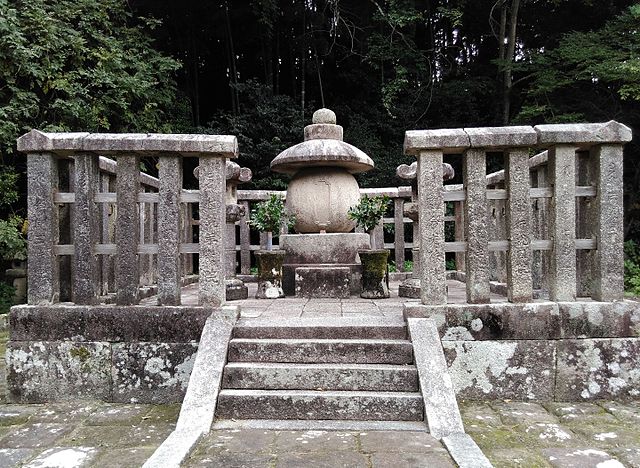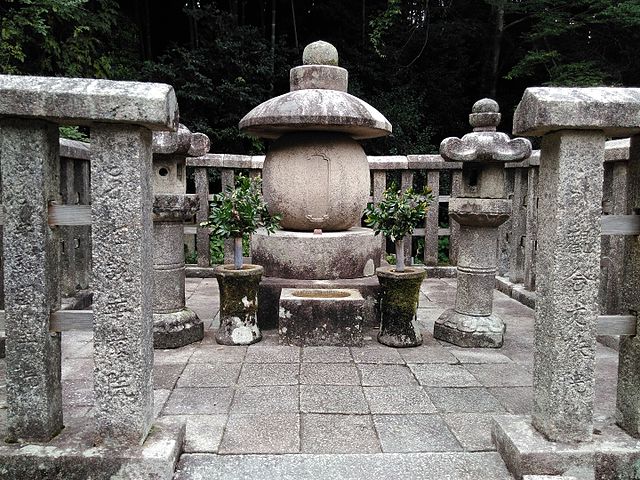
Grave of Matsudaira Naomasa
Gesshoji Temple (map)
Matsue, Japan
Gessho-ji, a Zen temple called Toun-ji before 1664, received its present name when Matsudaira Naomasa, a grandson of Tokugawa Ieyasu, became the first lord of Matsue and buried his mother Gessho-in on the grounds. It served as the family temple and burial place of the Matsue daimyo until 1868, when the tenth lord moved to Tokyo following the Meiji Restoration.
Each of the nine lords was given a separate burial ground, that is approached by a wooden kara-mon entrance gate and surrounded by toro (stone lanterns) on three sides. A short path leads from the entrance gate to a stone torii (pi-shaped gate); immediately behind the torii, there is a burial platform that supports a gorinto that is surrounded by a sacred fence (harmika).
Shown here is the grave of Matsudaira Naomasa, the first lord of Matsue (ruled 1638-1666). It is the only burial ground in Gessho-ji that is surrounded by a moat. The upper photo is taken from inside the burial ground, looking outwards across the moat and bridge to the gate. The flowers in this June photo are hydrangias, for which the temple is famous. The lower photos start at the gate and move inwards towards the platform.




